|
Jumilla is an enchanting, small wine region in southeastern Spain. While visiting Jumilla in 2021, I had the opportunity to meet with the owners, David Ferraje and Helio Abellán of Bodegas Carchelo. Over a sumptuous meal, I tasted their portfolio of impressive wines. Bodegas Carchelo was founded in 1990 and is located at the foot of the Sierra del Carche mountains, reaching an altitude of 1371 meters above sea level. They have estate vineyards situated in five subregions of Jumilla, each with varying soil profiles and climate exposures that add to the character of these wines. In addition to producing high-quality wines, Bodegas Carchelo also focuses on respecting and protecting the environment. For an in-depth exploration of Jumilla, and its star grape Monastrell, the region’s principal grape variety, please click on the link below to read my article. Visiting Royalty - THE WINEKNITTER http://thewineknitter.com/1/post/2022/01/visiting-royalty.html Are you ready to wine and dine Jumilla style? Carchelo DOP Jumilla Carchelo is an award-winning, organic certified, and vegan-certified wine made with 100% Monastrell. The grapes are hand-harvested from various estate vineyards with different soils, altitudes, and exposures to seek the balance and character typical of this territory. This wine is aged for six months in 225-liter French oak barrels and a minimum of three months in bottle. Check out their creative wine label when the bottle is turned upside down! Nose: Red fruit, berries, plum, and spice. Palate: A fresh and lively wine with notes of red and dark berries, spice, balsamic, and balanced acidity. It is smooth with a persistent finish. Alcohol: 14.5% SRP: $16.99 Pairing suggestions: Medium cheese, pasta, tapas, and charcuterie. Bodegas Carchelo suggests pairing this wine with a traditional Spanish dish. Tortilla De Patata (Spanish omelet) Tortilla de Patata is a traditional dish commonly served throughout Spain. It is offered in cafes and bars as a tapa or appetizer and served as a light dinner in Spanish homes. Since there are so few ingredients, the key to making a perfect dish is to use excellent olive oil and fresh eggs. The oil is used for cooking the potatoes, and its flavor is evident throughout the finished dish.
The Spruce Eats provided the following recipe that serves six as an entree or 8-10 servings as an appetizer. Prep time: 15 minutes Cook time: 30 minutes Cool time: 15 minutes Ingredients: 6 - 7 medium Yukon potatoes peeled 1 medium yellow onion diced into 1/4” pieces 1/2 tablespoon kosher salt, or to taste 1 1/2 to 2 cups Spanish olive oil 5 large eggs Instructions: 1) Hand-slice the peeled potatoes in half lengthwise. Then, with the flat side down, cut the potatoes into approximately 1/8-inch thick pieces. 2) Place the potatoes and onions in a large bowl, sprinkle with salt, and gently mix together. 3) In a large, heavy, nonstick frying pan, heat 1 1/2 cups of olive oil over medium-high heat. Carefully place the potato-onion mixture into the frying pan, spreading it evenly over the surface. The oil should almost cover the potatoes. Turn down the heat slightly so the potatoes do not burn—you want them to fry slowly until tender and creamy. 4) Cook the mixture until the potatoes are done—if a slice of potato breaks easily when poked with a spatula, the potatoes are done. Remove the mixture from the heat and drain, or remove with a slotted spoon. Let the potatoes cool off. To speed up the process, carefully spread them out on a baking sheet. 5) Crack the eggs into a large bowl and beat them by hand with a whisk or fork. Pour on top of the cooled potato-onion mixture. Gently mix together with a large spoon. Let it sit for about 5 minutes. 6) In a 9- or 10-inch nonstick pan, heat 1 to 2 tablespoons of the remaining olive oil over medium heat. Add the egg mixture, spreading it out evenly. Allow the egg to cook around the edges. Carefully lift up one side of the omelet to check if the egg has slightly browned. The inside of the mixture should not be completely cooked, and the egg will still be runny. 7) When the mixture has browned on the bottom, remove the pan from the stove and place a large dinner plate bigger than your pan on top. Turn the pan alongside the plate, so the tortilla sits on the plate. 8) Place the frying pan back on the stove and add just enough remaining oil to cover the bottom and sides of the pan. Let the pan warm for 30 seconds or so. 9) Slide the omelet from the plate into the frying pan. Use the spatula to shape the sides of the omelet and allow it to cook for 3 to 4 minutes. Turn the heat off and let the tortilla sit in the pan for two additional minutes. Next, slide the omelet onto a plate or cutting board and slice it into 6 to 8 pieces, like a pie. Enjoy with a glass of Carchelo! Until next time… Salud and disfrute de su comida! Penina To leave a comment or if you have an inquiry, please contact me at [email protected] Summertime brings with it beach and pool time, picnics, vacations, and lazing in the hammock. Unfortunately, heat waves and unbearable humidity can also accompany the summer months. One often hears the phrase “dog days of summer.” The origin of this phrase is related to the stars, not dogs wilting in the summer heat! Sirius is the brightest star in the night sky and part of the constellation Canis Majoris—the “Greater Dog.” The ancient Romans and Greeks believed that when the Dog Star, Sirius, appeared in the sky and occupied the same region as the sun, it created the hottest days of the year. They also believed it brought bad luck, drought, and chaos. The Romans called it “dies caniculares” or “days of the dog star.” For the ancient Romans, the dog days of summer were believed to occur from approximately July 24 to around August 24. Over time, the constellations have drifted, and the “dog days” dates have changed. According to the Old Farmer’s Almanac, the Dog Days are considered to be between July 3 and August 11 in the Northern Hemisphere. However, it seems that these days, heat and humidity may linger for a bit longer, regardless of Sirius’s position in the sky. Although one might tend to prefer white or rosé wines as the temps begin to climb, red wines should not be overlooked during the summer months. Many light-bodied to full-bodied reds are ideal for sipping outdoors while enjoying grilled fare. For instance, unoaked or lightly oaked red wines tend to be lighter and fruitier. Slightly chilling many red wines for no more than 30 minutes can enhance the flavors, minimize the focus on alcohol, and make the wine more refreshing. When choosing a wine to drink while outside on a hot day, I recommend staying below 14% ABV. (alcohol by volume) Alcohol is a diuretic that contributes to dehydration. And when combined with outside heat, which leads to sweating, one can become dehydrated quickly. Therefore, it is essential to drink water and stay hydrated! Here are two white and two red Italian wines to enjoy this summer or any time of the year. The Whites Bolla Soave Classico DOC 2023 Founded in 1883, Bolla winery is situated in the countryside of Valpolicella and produces classic Venetian wines. This wine is 85% Garganega and 15% Trebbiano di Soave. Grapes are sourced and handpicked from 15-to 25-year-old vines in the Soave Classico hills, where the soil is of volcanic origin. After fermentation in stainless steel vats, the wine is left on the fine lees at a low temperature until it is ready for blending. Nose: White blossoms, apple, tropical fruit and citrus. Palate: A dry white wine with lots of character. Silky texture with pineapple, melon, honeysuckle, and lemon curd. Light and refreshing! Alcohol: 13% SRP: $9.99 Pairing suggestions: Enjoy as an aperitif or with seafood, light pasta, risotto, or salads. La Scolca Gavi Dei Gavi Gold Edition DOCG 2021 La Scolca is located in the prestigious terroir of Rovereto di Gavi in the Piedmont region. They have been producing wine for over 105 years and are in their fifth generation, where tradition is combined with modernity. 100% Cortese grapes are sourced from the Gavi hills in vineyards with vines up to 60 years of age. Fermentation takes place in stainless steel tanks and rests on the lees until bottling. Nose: White flowers, green apple, almonds, citrus and minerality. Palate: A dry, crisp wine with fresh acidity and balanced notes of flint, almonds, honeydew, and white fruit. A hint of citrus teases the palate on the finish. Alcohol: 12% SRP: $16 Pairing suggestions: Perfect as an aperitif or served with appetizers, fish, seafood, white meat, risotto, or Asian cuisine. The Reds Sensi Sabbiato Bolgheri Rosso DOC 2022 Sensi’s family history started in Chianti in 1890 and then expanded to other areas in Tuscany. Currently, the winery is managed by the fourth generation, which produced its first Bolgheri DOC wine in 2007. The grapes for this wine are a blend of 60% Cabernet Sauvignon and 40% Merlot, sourced from Bolgheri and Livorno in sandy, mineral-rich soils near the Tyrrhenian coast in Tuscany. After fermentation, the wine aged for 12-14 months in French oak barriques, approximately 50% of which were new wood. Further aging took place in bottles. Nose: Dark berries, baking spice, croissants, a touch of herbs and earthy. Palate: Aromas segued onto the palate with notes of plum, dark cherry, and pomegranate, balanced with acidity and salinity. Dark fruit lingers on a long finish. Alcohol: 14% I’ve included this wine despite its 14% alcohol volume. It is a great addition to enjoy with barbecue fare. But save it for a cool summer day or evening, not a heat wave! SRP: $18 Pairing suggestions: Enjoy with your favorite grilled meat, seafood, white meat, or pasta and sauce. Tenuta Regaleali Lamùri Nero D’Avola Sicilia DOC 2020 Tasca Conti D’Almerita boasts over 200 years of winemaking history in Sicily, dating back to 1830. It remains family-owned and run by the Tasca family. They have five estates throughout Sicily, with Tenuta Regaleali considered the “mother estate” comprising 550 hectares in the highlands of central Sicily. In the Sicilian dialect, Lamùri means ‘love’ and represents the Tasca’s love for their native Nero d’Avola grape variety, estate-grown at some of the highest points in Sicily. This wine is 100% Nero d’Avola. After fermentation, the wine was aged for 12 months in 20% new and 80% 2nd and 3rd-year French oak barrels. Nose: Floral, dark cherry, berries, baking spice, herbs, and a hint of flint. Palate: Aromas spill onto the palate with soft tannins, berries infused with balsamic, and a savory finish of spice and acidity. Alcohol: 13% SRP: $19.99 Pairing suggestions: Grilled meat, chicken, game, seared tuna, pasta and red sauce, or pizza, Please remember that alcohol, in combination with high temperatures, can dehydrate us quickly, so be smart. Drinking plenty of water is essential when outdoors in sweltering heat, especially if you plan to consume alcohol! Until next time…
Cheers! Penina To leave a comment or if you have an inquiry, please contact me at [email protected] As most of you know by now, I drink white and red wines all year long. My palate and mood dictate what I drink, not the seasons. However, with the warmer weather finally here, the lighter wines tend to take preference, but not always! Sipping Pinot Grigio is a treat that is savored throughout every season in my home. To quote me from an article written in 2022, “Many, many years ago, when my taste buds started developing a fine appreciation for wine, Pinot Grigio was not high on my list of enjoyable wines. I felt it lacked personality. It wasn’t until several later that I tasted Pinot Grigio from the northeastern region of Italy for the first time and had an “aha” moment. So this was how Pinot Grigio was supposed to taste! I was hooked!” Pinot Grigio, aka Pinot Gris, is a white wine grape that thrives in a cool climate. The color of the skin ranges from dark purple to pink to grayish. (grigio means gray in Italian.) It is a dry, easy-drinking wine that is clean, fresh, and aromatic. Flavors range from zesty and straightforward to complex. Typical flavor profiles of this wine include but are not limited to floral notes, green apple, lime, lemon, white stone fruit, pear, honeysuckle, bitter almond, bright acidity, and minerality. Due to Pinot Grigio’s racy acidity, it’s a versatile companion to a variety of dishes. From seafood, especially oily fish, to shellfish, white meat, light pasta, salads, and vegetable risotto, it pairs beautifully. Or, enjoy it as an aperitif! I was recently offered a few Pinot Grigio samples to review, to which I replied, “Yes, please!” So, let’s dive in! Trentino Ventessa Pinot Grigio Vigneti delle Dolomiti IGT 2023 This wine is produced by Mezzacorona, located in Trentino in the Italian Alps. The winery, surrounded by the Adige River, has been crafting estate-grown wines since 1904. Ventessa is made without chemical alteration. After the grapes are hand-harvested, they are immediately crushed and undergo a very short cold maceration in the press. The grapes are then softly pressed. The musts are then fermented for eight days. The wines are kept on the yeasts in steel tanks and are naturally low in calories and alcohol. Nose: White flowers, peach, and melon. Palate: White stone fruit, honeydew melon, citrus, and a touch of minerality balanced with crisp acidity. A light and refreshing sip! Alcohol: 9% SRP: $10.99 Pairing suggestions: Enjoy as an aperitif, or Mezzacorona suggests pairing with delicate finger foods, shellfish, medium-mature cheeses, and baked & fried fish dishes. Veneto Pasqua Black Label Pinot Grigio delle Venezie DOC 2023 My “love affair” with Pasqua Wines continues with this Pinot Grigio. Their expressive and memorable wines always please my palate. This family-run business was founded in 1925 and is located in Verona. It is led by third-generation Pasqua brothers Riccardo and Alessandro. The company has complete control over approximately 741 acres of vineyards (1/3 is estate-owned), stretching from Lake Garda to Soave. After the grapes are harvested, fermentation takes place in steel tanks. 30% of the wine ends alcoholic fermentation in French oak barrels and continues aging in Tonneaux of second use for about 3 months. I love the glass stopper! Nose: Beautiful floral notes with white stone fruit, pear, toast, and a trace of vanilla. Palate: Aromas segue onto the palate with nuanced notes of apricot, white peach, and tropical fruit. Toasty flavors and vanilla linger on the finish. It is complex, balanced, and very satisfying. Alcohol: 12% SRP: $14.99 Pairing suggestions: Pasqua suggests fish appetizers, shellfish, clams, fish-based first courses, white meats, and sushi. Friuli Venezia-Giulia Livio Felluga Pinot Grigio DOC 2023 Founded in 1956 by Livio Felluga, one of the most respected producers in Friuli, this 500-acre estate has 370 acres of wine vineyards in the Collio and Colli Orientali del Friuli. Livio is renowned for his dedication to reviving high-quality viticulture in Friuli. Livio’s son, Andrea Felluga, now continues the family legacy of producing wines of distinction. Grapes for this wine were hand-picked. After fermentation in steel vats, the wine was kept on the lees for a few months to increase its complexity, creamy texture, and suitability for aging. Once bottled, it matured in temperature-controlled rooms. Nose: A bouquet of white flowers, peach, pear, apricot, and lemon.
Palate: This wine dances with aromas that segue onto the palate. Minerality, crisp acidity, and a savory/salty dance add to this wine’s complexity. Lemon tarts and sweet apples linger on a long and fruity finish. Alcohol: 13.5% SRP: $35 Pairing suggestions: Livio Felluga noted that this wine pairs beautifully with fish, shellfish, risotto, and baked vegetables. Remember, Pinot Grigio is not just a summer indulgence; it’s a year-round delight. Its crisp, clean taste is a perfect match for any season, whether it’s a warm summer day or a cozy winter evening. So, next time you are offered a glass of Pinot Grigio from northeastern Italy, say, “Yes, please!” Until next time… Cheers! Penina To leave a comment or if you have an inquiry, please contact me at [email protected] The historic San Felice Wine Estate is located in the heart of Chianti Classico in the commune of Castelnuovo Berardenga in Tuscany, Italy. The estate covers an area of more than 650 hectares. There are 150 hectares of wine vineyards, 80% of which is devoted to Sangiovese, the heart of their production. Their presence extends to the prestigious terroirs of Montalcino and Bolgheri as well. San Felice has approximately 17,000 olive trees, experimental plantations, and a hotel complex. Known for its innovation and research to rejuvenate and preserve nearly extinct ancient Tuscan grape varieties, San Felice has launched its new Vitiarium Collection. Vitiarium is a botanical Latin word, when translated to English, means “a nursery for vines - a work in progress." To quote San Felice, “This new line marks the beginning of a fresh chapter in a legacy that continues to evolve, accelerating the trajectory of this true icon of Tuscan wine. This journey now takes on a new identity: Vitiarium, a name that speaks to deep roots—those reaching back to the early 1980s, when ancient native grape varieties, nearly lost to time, were rediscovered and revived. The idea of preserving a forgotten heritage gave rise to an experimental vineyard dedicated to safeguarding Tuscan viticultural biodiversity, from which this new line draws its name. The collection includes Borgo Chianti Classico DOCG, Pugnitello Toscana IGT, In Avane Toscana IGT (a white wine), and La Pieve Chianti Classico DOCG Gran Selezione—each an authentic expression of a land where tradition and innovation meet.” Over the past several years, I have tasted and reviewed a selection of San Felice wines from their three Tuscan estates. They are all noteworthy wines, as are the following four new labels from the Vitiarium Collection. In Avane Chardonnay Toscana IGT 2023 The name “In Avane” comes from “Avenal,” the Etruscan name of the area, which encloses a trace of the ancient culture present in the territory of San Felice. The grapes for this Chardonnay are hand-harvested from the San Felice vineyard and fermented mostly in stainless steel and partly in oak barrels. It is then bottle-aged for a few months. Nose: Beautiful floral and citrus aromas with a slight hint of vanilla. Palate: White peaches, fresh acidity, and a surprisingly long finish with citrus and melon teasing the palate. Alcohol: 12.5% SRP: $33 Pairing suggestions: Enjoy as an aperitif or serve with appetizers, salads, seafood, and grilled chicken. Borgo Chianti Classico DOCG 2022 San Felice said, “Chianti Classico with a character that embodies the soul of San Felice. Sangiovese and Pugnitello come together to create a fragrant and vibrant wine, a faithful and authentic representation of our distinctive terroir.” The blend is primarily Sangiovese with a bit of Pugnitello. Grapes were vinified separately in stainless steel for two weeks and then aged for about 12 months in large Slavonian oak barrels before bottling. Nose: Floral notes, fresh dark fruit, berries, baking spice, and a touch of earth. Palate: Aromas spill onto the palate with cherry and forest floor. Spice and earth linger on the finish. Balanced, smooth and juicy! Alcohol: 13.5% SRP: $33 Pairing suggestions: Grilled meat, seared tuna, mushroom risotto, pizza, or hearty soups and stews. La Pieve Chianti Classico Gran Selezione DOCG 2021 From San Felice, “La Pieve Gran Selezione expresses the essence of San Felice's Chianti Classico. The Sangiovese, harvested from the finest company vineyards and vinified with care, produces a wine that represents the highest expression of the terroir. This is in line with San Felice's production philosophy, which has always sought to interpret the land through native grape varieties.” The predominant grape for this wine is Sangiovese, along with other native grapes. Fermentation occurs in steel tanks for 22 days, then malolactic fermentation and aging in wood for 24 months. It is bottle-aged for eight months before release. Nose: Floral notes of violet, dense red fruit, dark cherry, baking spice, anise, and cherry tobacco. Palate: Well-structured and silky smooth with aromas segueing onto the palate with dark cherry, vanilla, and hints of licorice lingering on a long finish. Alcohol: 14% SRP: $50 Pairing suggestions: Enjoy with a charcuterie board, roasted meats, stews, game, and Pappardelle al Cinghiale. Pugnitello Toscana IGT 2021 From San Felice, “Pugnitello is an ancient Tuscan native grape variety, whose name (little fist) refers to the shape of its cluster. Following its rediscovery, it has been researched in collaboration with the universities of Florence and Pisa in San Felice’s experimental vineyard. This wine is the fruit of 20 years of study and experimentation focused on saving native Tuscan grapes from extinction. Pugnitello is noteworthy for its distinctive characteristics, smoothness, and full-bodied concentration.” This 100% Pugnitello was fermented on the skins for 20 to 25 days, followed by malolactic fermentation, and then aged for 18 to 20 months in French oak barriques, followed by eight months of bottle aging. Nose: Jammy-rich fruit and lots of baking spice, especially cinnamon and clove. Earthy with deeper notes of dark berries and plum.
Palate: Beautifully rich, fruity, and smooth, with a sweet and savory dance. Perfectly balanced and well-structured. Hints of cherry, plum, cocoa, cedar, and smokey notes do a sexy tango on the palate. Run, don’t walk to scoop this one up. Alcohol: 13.5% SRP: $69 Pairing suggestions: Roasted and seared meats, hearty stews, game, fowl, and mushroom risotto. With Memorial Day weekend in full swing, these wines will pair with beach sunsets, BBQs, outdoor and indoor dinners, or relaxing with a good book or movie. And, of course, they are perfect to sip all year long! Until next time, Cheers! Penina To leave a comment or if you have an inquiry, please contact me at [email protected] Spring is in full swing, with flowers blooming against a background of vibrant green foliage bursting from trees. Birds are nesting, and butterflies are reaping the benefits of sweet floral nectar. It is the season of renewal and the promise of new beginnings. With warmer weather upon us, I believe we are all ready to embrace the outdoors. I certainly am! As most of my readers know, what type of wine I drink is not dictated by the weather, but what my palate is in the mood for. Billy Joel’s lyrics from the song “Scenes From An Italian Restaurant” ring true for me. “A bottle of white, a bottle of red Perhaps a bottle of rose instead” “A bottle of red, a bottle of white It all depends upon your appetite” So, with that in mind, here is a sampling of four wines I received, which will please your palate and pair well with spring, and all year round! Domaine Bousquet Reserve Organic Chardonnay 2023 Domaine Bousquet is no stranger to my website. I have reviewed and thoroughly enjoyed all of their wines throughout the years. This family-owned estate is in the Gualtallary Valley, high up in the Tupungato district of the Uco Valley in Argentina’s Mendoza region. This 100% Chardonnay comes from certified organic estate fruit and is hand-harvested from low-yield vineyards located at the foot of the Andes at an elevation of 4000 plus feet. 50% of the wine is fermented in oak for 15 days, and the other 50% in tanks. The wine is aged for six months in 3rd use French oak barrels on the lees for a Burgundian style. Nose: Lovely floral and tropical notes, with apples, lime, freshly baked bread, and a hint of vanilla. Palate: Creamy mouth-feel with beautiful acidity, oak aromas transcend on the palate with pear and tropical notes of pineapple and pink grapefruit. Oak and acidity persist on a long and delicious finish. Alcohol: 13.5% SRP: $18 Pairing suggestions: Enjoy as an aperitif or with seafood, salads, cream-based pasta, mushroom risotto, or cheese. Herzog Lineage Pinot Noir Clarksburg 2023 Herzog Wine Cellars has a long family history of winemaking that spans nine generations. From Europe to New York to the vineyards of California, the Herzog family gave rise to the American kosher wine industry, including premium kosher winemaking in California. Today they have eight brands of wine, one of which is the Lineage brand. This 100% Pinot Noir is harvested from vineyards in Clarksburg, CA. Try as I might, I could not find any technical data or the aging process of this wine. Nose: Cherries, pomegranate, cocoa, and baking spice. Palate: Silky mouth-feel with cherries, strawberry, earthy, and a hint of baking spice lingering on the finish. Alcohol: 13% SRP: $20 Pairing suggestions: Roasted leg of lamb, duck with cherry glaze, grilled portobello burgers, or seared tuna. Attems Pinot Grigio Ramato Friuli DOC This wine is produced by Attems, a historic estate located in Friuli, in northeast Italy. In 2000, the estate was sold to the Marchese Vittorio Frescobaldi. Pinot Grigio, aka Pinot Gris, is a white wine grape that thrives in a cool climate. The vineyards for this grape are situated in the middle area of the property, known as “manine” or “little hands” which is a primarily flat area set between Collio and Isonzo. This 100% Pinot Grigio gets its coppery/coral color from slight contact of about ten hours with the purple skins before pressing and fermenting. Following fermentation, the wine rested for four months on noble lees. Nose: White fruit, melon, cherry, citrus, and wildflowers. Palate: Crisp fruit with nice acidity, pink grapefruit, melon, cherry pie, and minerality lingering on the finish. I love the dance between tart and juicy. Alcohol: 12.5% SRP: $20 Pairing suggestions: Seafood, goat cheese wrapped in prosciutto, cream-based pasta, grilled veggies, or enjoy as an aperitif. Darom by Yatir Cabernet Sauvignon 2023 Yatir Winery, founded in 2000, is located at the southern tip of the Judean Hills, and built at the foot of the Israelite Tel Arad Fort (an archeological site) in the heart of the Negev desert. The vineyards of the Yatir Forest are just 10 minutes away. Vineyards are planted at an altitude of up to 900 meters above sea level and are dispersed throughout different locations in the forest, each with its own distinct feature. The dry desert climate and cool nights contribute to producing exceptional wine grapes. The grape blend for this wine is 85% Cabernet Sauvignon, 10% Petit Syrah, and 5% Shiraz. Grapes are hand-harvested; the wine is aged for eight months in small oak barrels. Nose: Dark fruit, cherry, baking spice, forest floor, and a hint of violet.
Palate: Rich and fruit-forward with lots of berries, cherry, spice, earthy, and slate. Alcohol: 13% SRP: $35 Pairing suggestions: Prime ribs, Mediterranean cuisine, risotto, and chocolate desserts. Whatever the season, occasion, or “just because” moment, these wines are price-approachable, and your palate will thank you! “A bottle of red, and a bottle of white Whatever kind of mood you're in tonight” Billy Joel Until next time… Cheers! Penina To leave a comment or if you have an inquiry, please contact me at [email protected] I love daylight-saving time! With spring approaching this week and longer days ahead, enjoying sun-filled early evenings is blissful! It is a special time for me to unwind and enjoy the outdoors at the end of the day. With a glass of wine in hand, I am entertained by the peaceful sounds of bird chatter and the added chorus of spring peeper frogs. And, I can finally exhale the day. I recently received samples of wine from an Israeli winery to help usher in spring and beyond. Psâgot Winery was founded by Yaakov Berg and his wife Na'ama in 2003. It is a unique gem in the Binyamin region north of Jerusalem. The winery, located in the community of Psâgot, stands out for its rich history and exceptional wines. Nestled in the historic hills, these vineyards are 900 meters above sea level. The high altitudes, combined with ancient terraces of rich, chalky soils and a perfect climate for viticulture, enhance the quality of the grapes and contribute to the complexity of the wines. While building the winery and creating a cave for barrel aging, a 2000-year-old gold coin from the Great Revolt (66-73) CE was found in an ancient cave in the Psagot Village. Each wine label features an exact replica of this coin, which is hand-glued to each label. However, only one of the bottles I received had the coin on it. Perhaps the other coins fell off in transit. The Wines Psâgot Sauvignon Blanc 2023 Grapes for this 100% Sauvignon Blanc are night-harvested from two vineyards in the Jerusalem mountains. The grapes are then pressed and fermented in stainless steel. Nose: White flowers, tropical fruit, melon, citrus and minerality. Palate: Vibrant acidity, refreshing notes of pineapple, honeydew, citrus zest, and minerality showing off. Lovely Alcohol: 12.5% SRP: $32 Pairing suggestions: Enjoy as an aperitif or serve with seafood, appetizers, grilled chicken, light pasta dishes, and mushroom quiche. Psâgot Peak 2021 This wine is a southern “French blend” of 51% Peitit Sarah and 49% Shiraz, night-harvested from their highest quality vineyards in the Jerusalem Mountains. The grapes are fermented and then aged separately for 12 months in French and Hungarian oak barrels before blending. Nose: Berries, plum, tobacco, and baking spice. Palate: Full-bodied with blackberries, blueberries, a hint of strawberry, pepper, vanilla, earthy, and good structure. Elegant Alcohol: 14% SRP: $40 Pairing suggestions: Roasted/grilled white meat and game, roasted potatoes, and hearty stews. Psâgot Edom M Series 2023 This is a Bordeaux-style blend of 40% Cabernet Sauvignon, 50% Merlot, 4% Malbec, and 6% Petit Verdot. Grapes are sourced from vines that thrive on a high mountain ridge overlooking the Edom Mountains. Before blending, the grapes are fermented and aged separately in French oak barrels for 14 months. Nose: Berries, plum, baking spice, and notes of minerality.
Palate: Aromas segue onto the palate with dark fruit, vanilla, pepper, and soft tannins. This is an expressive wine with a long finish. Alcohol: 14% SRP: $50 Pairing suggestions: Game, red meat, hearty stews, seared tuna, and aged cheese. The above wines are a perfect accompaniment to sunsets, dining, special occasions, and “just because” moments. Yaakov Berg, co-founder of Psâgot, said, “We want the world to share our passion for Psagot wine, Israel, and for those you love, From our hearts and vineyard to your home.” Until next time… Cheers! Penina To leave a comment or if you have an inquiry, please contact me at [email protected] As the snow falls on this wintry day, my thoughts drift to the salty scent of the ocean, sand between my toes, and a glass of rosé in hand. Although I may not be able to indulge my yearnings for the seaside right now, a glass of wine is definitely within my reach! Here are a few expressive Italian wines that should be on your radar. They just might transport you to your place of bliss! The first two wines are samples I received recently. Tenuta Ammiraglia Alìe Toscana IGT 2021 This delicious rosé is produced by Marchesi dé Frescobaldi winery, which has numerous estates located throughout Tuscany. The grapes for this blend of Syrah and Vermentino are harvested from vineyards in the heart of the Maremma, on hills bordering the nearby Tyrrhenian coast, which boasts abundant sun and sea breezes. This wine is appropriately named after the Greek sea nymph goddess, Alie. After fermentation in steel tanks, the wine is aged for three months on fine lees. Nose: Lovely floral notes, citrus, wild strawberries, herbs, and a whiff of minerality. Palate: This wine is fresh, juicy, and crisp, with aromas segueing onto the palate and balancing well with sapidity. Pink grapefruit and herbs linger on a long finish. Alcohol: 12% SRP: $20.00 Jermann Pinot Grigio Ramât 2022 Friuli DOC Jermann was founded in 1881 by Anton Jermann, who moved from his native Austria to set up roots in Friuli. Since the 1970s, his great-grandson Silvio Jermann has carried on the tradition of wine-making and taken the company to worldwide recognition. This 100% Pinot Grigio is a white wine with a slightly copper hue due to a five-hour maceration on the skins before fermentation in stainless steel. The concept is to maximize aromas, not extract color. Aging is six months on lees, also done in stainless steel. Nose: White flowers, pear, apricot, apple, lemon zest, herbs Palate: Aromas spill onto the palate with fresh and vibrant notes. Sapidity and peaches linger on the finish. Alcohol: 13% SRP: $39.99 Pasqua “11 Minutes” Rosé Trevenezie IGT 2023 When I think of Italian rosé, this particular wine never disappoints. I always have a bottle of “11 Minutes” chilling in my refrigerator. And this is not my first review of it! This family-run business was founded in 1925. It is located in Verona, Italy, and is led by third-generation Pasqua brothers Riccardo and Alessandro. The company has complete control over approximately 741 acres of vineyards (1/3 is estate-owned), stretching from Lake Garda to Soave. “11 Minutes” is a unique blend of sustainably grown grapes sourced from Lake Garda. The blend is 50% Corvina, 25% Trebbiano di Lugana, 15% Syrah, and 10% Carménère. It is called “11 Minutes” because after the harvest, the grapes are gently pressed, and with only 11 minutes of skin contact, the most noteworthy qualities of the grapes are extracted, and the color is obtained. The bottle is an unusual and eye-catching oval shape, with an alluring photo of Lesbia seen through the front label. Nose: Tantalizing floral notes, red berries, citrus, and a hint of herbs.
Palate: This is a fresh and inviting rosé with wild strawberries, spice, vibrant acidity, and a touch of pink grapefruit on the finish. Alcohol: 12.5% SRP: $18.99 Pairing suggestions for the above wines: Enjoy as an aperitif or serve with grilled fish, seafood, risotto, or salads. The whimsical cookies in the photos were made by Bedford Village Pastry, located in the heart of Bedford Village, NY. Next time you are in the area, check out their tantalizing and creative desserts. Until next time… Cheers! Penina To leave a comment or if you have an inquiry, please contact me at [email protected] Happy 2025! May it be a year filled with good health, much laughter, love, and peace. Let’s toast the New Year with a glass of Italian bubbly from Abruzzo and Franciacorta, two areas I have explored firsthand; sip by sip! Abruzzo at a glance. Abruzzo is a region nestled in central Italy between the Adriatic Sea and Gran Sasso d’Italia (one of the highest peaks in Italy, standing at 9,554 ft.) and Majella Massif, both part of the Apennine Mountains. For centuries, the inhabitants of Abruzzo have referred to the Majella Massif as a sacred mountain. Two geographical areas comprise Abruzzo: the inland mountainous area that covers 65% of the entire region and the long coastal area with sweeping hills. Climate and geography play an essential role in the outcome of wine, and the stage is set for the terroir of Abruzzo. A moderate coastal climate exists along the Adriatic-facing side of the Apennines and is more continental inland. The vineyards benefit from the high altitude, which provides significant diurnal temperature variations and good ventilation that cools the vineyards, while the Adriatic contributes a coastal breeze. Primary soils are clay-rich interspersed with sandy limestone and marine deposits found along the coastline. Calcareous soils, marl, and rock are inland. Cantina Zaccagnini Tralcetto Brut Rosé IGT Founded in 1978, Cantina Zaccagnini is situated among the scenic hills of Bolognano in the province of Pescara. Every bottle they produce has a vine branch tied with raffia around the neck of the bottle. The Cantina said, “It has become a symbol of excellence, passion, and love for art and wine. Made by the women of Bolognano, where our winery was founded, the “tralcetto” has become an ambassador for the region and the wines of Abruzzo throughout the world, standing for quality connection, and respect for the land.” The estate’s vineyards are organically farmed but not certified. This sparkling wine is produced using the Charmat method. Nose: Red berries with hints of ginger and minerality. Palate: Fresh and dry with fine bubbles and notes of strawberry, raspberry, and a touch of spice. Cranberry notes linger on a long and slightly tart finish. Delicious! Alcohol: 12% SRP: $20 Pairing suggestions: Enjoy as an aperitif or with seafood, shellfish, pasta, vegetable risotto, or grilled chicken. Franciacorta at a glance. Franciacorta is a small wine-producing appellation located in the Brescia province in the Lombardy region of northeastern Italy. Due to the morainic origin of this area (rocks and sediments carried down by the retreating glaciers), the well-draining alluvial soil is rich in minerals. The climate in Franciacorta is considered warm continental, influenced by the Alps. The area also benefits from its close proximity to Lake Iseo, which helps moderate temperatures and plays an important role in both summer and winter seasons. A beautiful dance occurs between the cool air that descends from the Alps and is then captured by Lake Iseo, allowing just the right amount of warmth to spread over the vineyards so that the grapes can ripen and reach proper sugar levels. The dance continues at night when the cool air from the higher elevations of the Alps swoops down to bring fresh air and cool the vineyards from the heat of the day. The diurnal temperatures contribute to optimal grape ripening and preserving acidity in the grapes. Franciacorta DOCG sparkling wines are produced exclusively using the traditional “Metodo Classico” method, in which the second fermentation occurs in the bottle. Only Chardonnay, Pinot Nero (Pinot Noir), and Pinot Blanc are allowed in the blend. The regulations are very strict. The harvest must be done by hand, and the requirements for aging on the lees are as follows: Franciacorta Non-Vintage is 18 months Franciacorta Satèn and Rosé Non-Vintage is 24 months Franciacorta Vintage is 30 months Franciacorta Riserva is 60 months Berlucchi ’61 Extra Brut Although still wine and sparkling wine have been made in this area for centuries, it is Franco Ziliani, a young winemaker working for Guido Berlucchi, who is credited for his approach to making the highest quality metodo classico wine with his first vintage in 1961 bearing the name ‘Franciacorta’ on the label. The winery has 515 hectares of land and produces approximately 4,500,000 bottles of Franciacorta DOCG wine annually, following organic farming methods. This Extra Brut ’61 is a tribute to the birth of Franciacorta in 1961. It is made with 85% Chardonnay and 15% Pinot Noir. Minimum aging is 24 months on the lees, followed by two months after disgorgement. Nose: Fragrant white flowers, ripe red berries, apricots, Meyer lemons, and yeasty bread. Palate: Creamy mousse with crisp acidity that blends with the aromas that segue onto the palate. It finishes with a touch of almond and lemon zest. An elegant pour! Alcohol: 12.5% SRP: $38 Pairing suggestions: Enjoy this sparkling wine as an aperitif or with seafood, creamy pasta dishes, ripe cheese, and veggie appetizers. Whether you are celebrating a special occasion or a “just because” moment, your palate will be delighted with these sparkling wines! Happy New Year! Until next time…
Cheers! Penina To leave a comment or if you have an inquiry, please contact me at [email protected] Happy Autumn! 🍂🍁 I took this photo in early October 2019 while spending time in the Franken (Franconia in English) wine-growing region in Germany’s historic state of Bavaria. The vineyards, landscapes, and colors were breathtaking! And the wines made my palate sing! It was a beautiful time of year to be there. If you would like to join me on this nostalgic trip, click the links below. It is a magical tour of an enchanting region filled with history, culture, fantastic cuisine, and exceptional wine!
http://thewineknitter.com/1/post/2019/10/day-755-exploring-the-franken-wine-region-part-one.html thewineknitter.com/1/post/2019/10/day-756-exploring-the-franken-wine-region-part-two.html Or, click "Franken Wine Region" in the Catagories column to the right. Cheers to great memories and a colorful autumn! 🍁 Until next time… Cheers! Penina To leave a comment or if you have an inquiry, please contact me at [email protected] It never ceases to amaze me that I can visit countries worldwide and converse in real-time with friends and family or meet with wine producers through the wonders of technology. Not long ago, I traveled to northern Italy via a Zoom meeting with brothers Aldo and Paolo Rametta to learn about the Romagna wine region and their two estates and a tasting of several wines they produce. The slopes of Romagna nestled in the eastern part of the Emilia-Romagna wine region in northern Italy are a treasure trove waiting to be explored. Romagna is a buffered zone between the Apennine mountains and the Adriatic Sea and is known for its rich and fertile terroir. The Emilia-Romagna region, with its proximity to Tuscany, Lombardy, Veneto, and the Adriatic Sea has a rich history of wine production dating back to the seventh century BC and is considered among the older Italian wine regions. It’s capital is Bologna. Aldo and Paolo were born in Louisiana, and although they grew up in the United States and Switzerland, they spent most of their lives abroad. Their passion for the environment, traditional winemaking, and family roots and history led them to Romagna and the purchase of two very distinct wine estates. Their main goal is to produce “a gentle expression of high quality from single vineyards.” Poggio della Dogana is the first wine project begun by the Rametta brothers. They purchased the estate in 2017, located in Terra del Sole. It includes a vineyard that is more than twenty years old which was already in organic conversion at the time. The vineyards cover a total of 20 hectares on a hilly area between Castrocaro Terme and Brisighella, at an altitude between 180m and 300m, with different soil characteristics in each area. The focus of the estate is representative of the Romagna territory, which grows Sangiovese and Albana, a white grape. Aldo said, “Albana is a white wine but quite peculiar for a white variety. We joke that it is red wine dressed in white. Its thick skins release tannins and complexity.” Ronchi di Castelluccio is in Modigliana, in the heart of the Sangiovese di Romagna lands. The Rametta brothers acquired this historic estate in 2020. There are approximately 30 hectares, with vineyards at an altitude between 250 and 500 meters above sea level. Biodiversity and sustainability are practiced in the single vineyards. “The historic vines have been restored, no plant has been torn down and the old growing systems have been introduced.” Except for Sauvignon Blanc, all the crus are 100% Sangiovese grapes. Here are four wines we tasted together (samples I received prior to the meeting.) Ronchi di Castelluccio Sottovento di Castelluccio IGT 2021 Produced from a single vineyard, this 100% Sauvignon Blanc was hand-harvested at an altitude of 390 meters. Soil is marl and calcareous sandstone. Fermentation took place in stainless steel and the wine was aged nine months in wood and a minimum of nine months in bottle. Nose: White flowers, citrus, white stone fruit, saltiness. Palate: Aromas segue onto the palate with fresh and lively notes, and sapidity lingering on the finish. Alcohol: 13% SRP: $40 Poggio della Dogana Belladama Romagna DOCG Albana Secco 2022 This 100% organic Albana was hand-harvested from 20-year-old vineyards at 200m and 300m altitude. Fermentation took place in stainless steel vats, and was aged for ten months in concrete and a minimum of four months in bottle. The typical signature of this wine is its intense golden color, which becomes more intense as it ages. Nose: White flowers, citrus, peach, apricot, and herbs. Palate: Lively acidity, fresh, dry, good structure, and a touch of minerality. A trace of tropical fruit and citrus zest linger on the finish. Alcohol: 13.5% SRP: $30 Ronchi di Castelluccio Buco del Prete di Castellucio DOC Sangiovese Modigliana 2021 From the 300m alt. single vineyard of the same name, Buco del Prete, this 100% Sangiovese was hand-harvested and fermented in steel. Aging took place in large French oak barrels for 12 months and at least six months in bottle. This vineyard is the lowest altitude vineyard on the estate at Modigliana. Nose: Dark fruit, forest floor, baking spice, and a hint of lavender. Palate: Rich dark fruit, dark berries, black cherry, fennel, lively acidity, smooth tannins, and a touch of spice on a long finish. Alcohol: 13% SRP: $40 Ronchi di Castelluccio Ronco della Simia DOC Sangiovese Modigliana 2020 The grapes for this 100% Sangiovese were sourced from Modigliana, in a vineyard restored in 2019 that was originally planted in 1975. It is a single vineyard with the highest elevation for a Sangiovese vineyard. (370 meters alt) Fermentation took place in steel and small oak vats and then was aged for ten months in Allier, Vosges, low-toasted tonneaux, and barriques. It then remained in bottle for a minimum of 14 months. Nose: Violets, red fruit, earthy, and baking spice. Palate: Beautiful texture and mouthfeel. Sapidity is present. Juicy, meaty fruit, dark cherry, smooth tannins, sweet spice, and a long finish. Alcohol: 13.5 % SRP: $140 In addition to my palate being entertained, the Rametta brothers had lots of information and stories to share. Their passion, love, and respect for the environment and history were palpable. They have piqued my interest in visiting Romagna and immersing myself in the land, culture, and wine! “There is no future without respect for history: we will be brave and let ourselves be driven by dreams and emotions.” Aldo & Paolo Rametta Until next time…
Cheers! Penina To leave a comment or if you have an inquiry, please contact me at [email protected] |
Categories
All
|

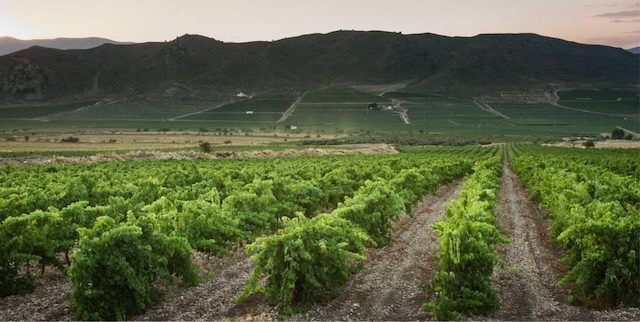
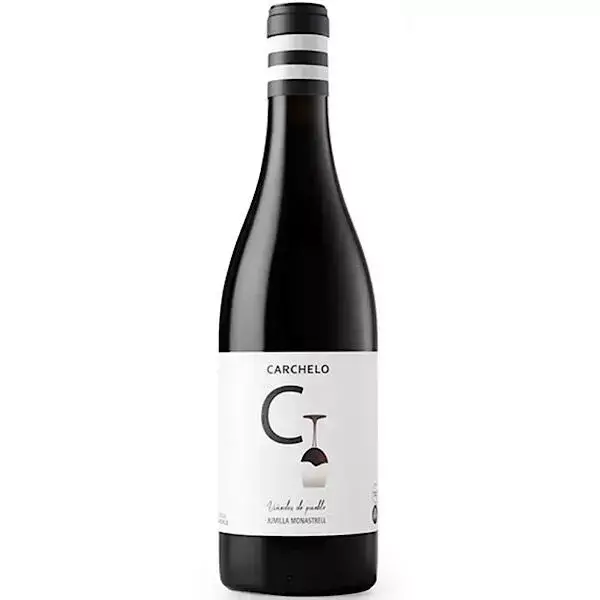
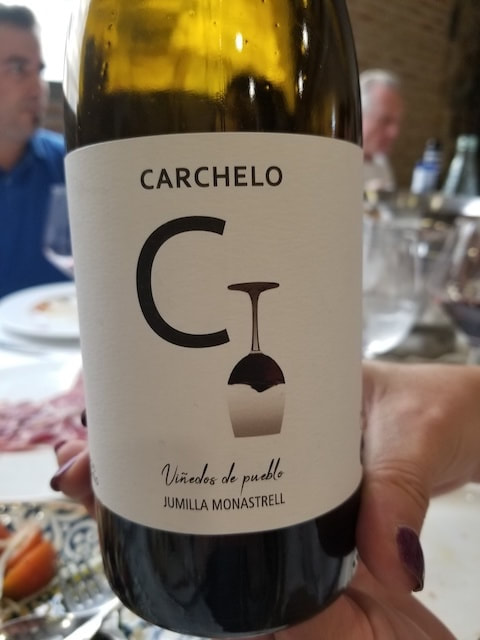
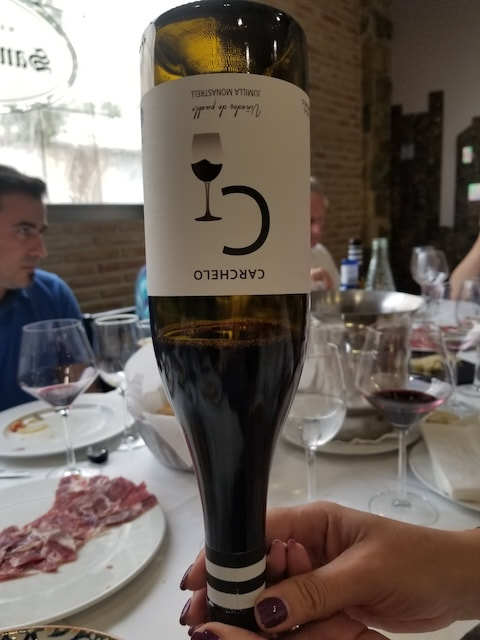
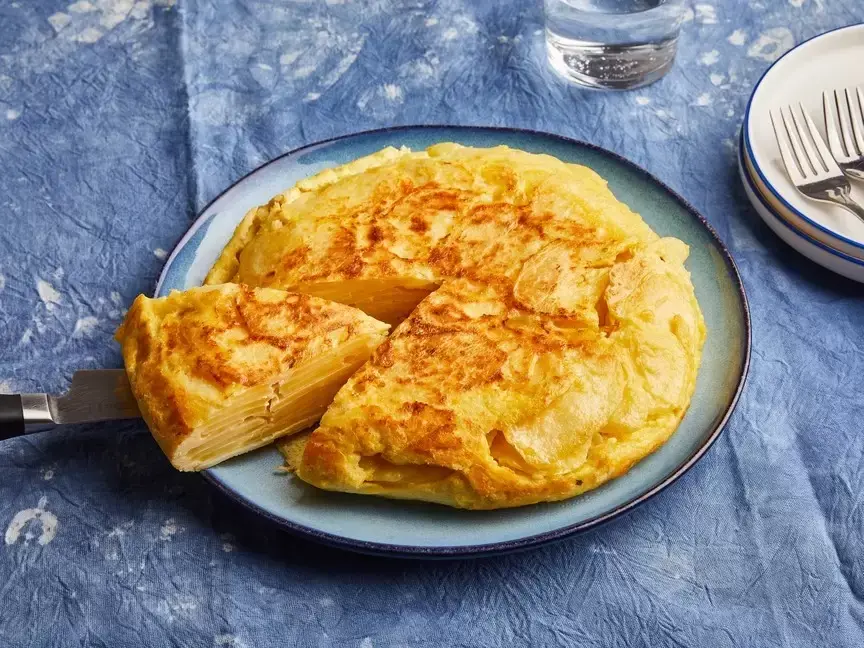








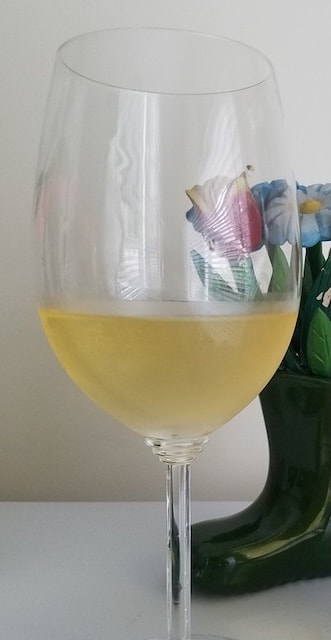
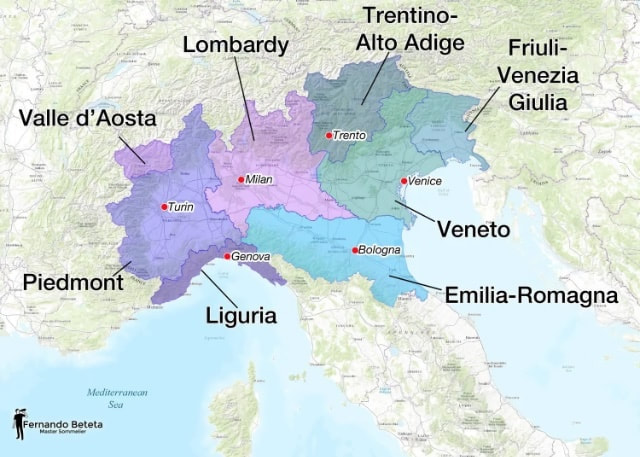
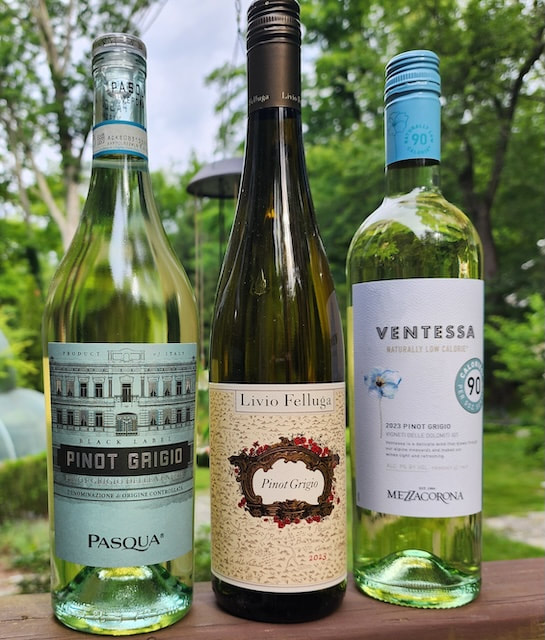
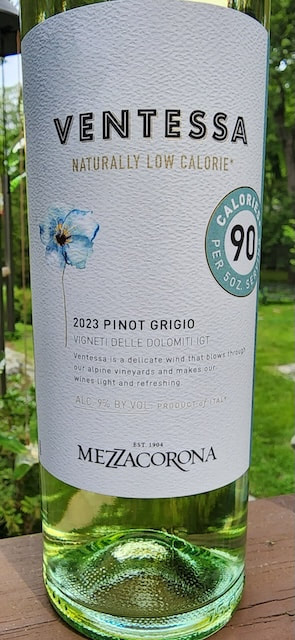
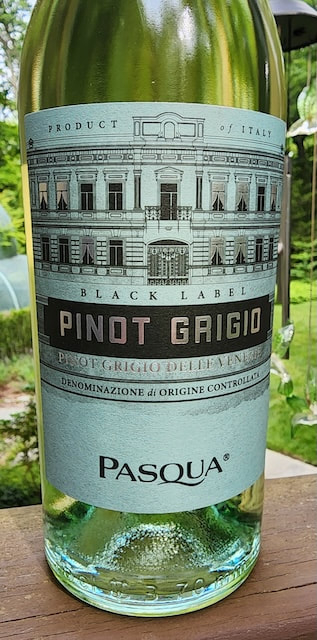
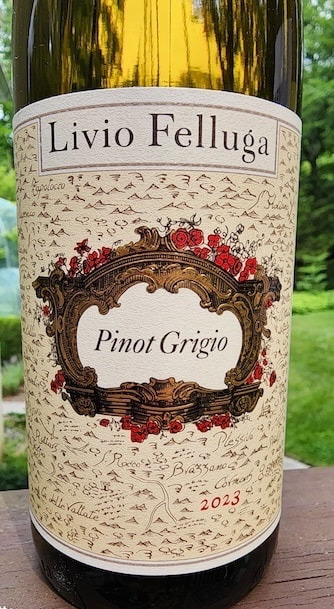
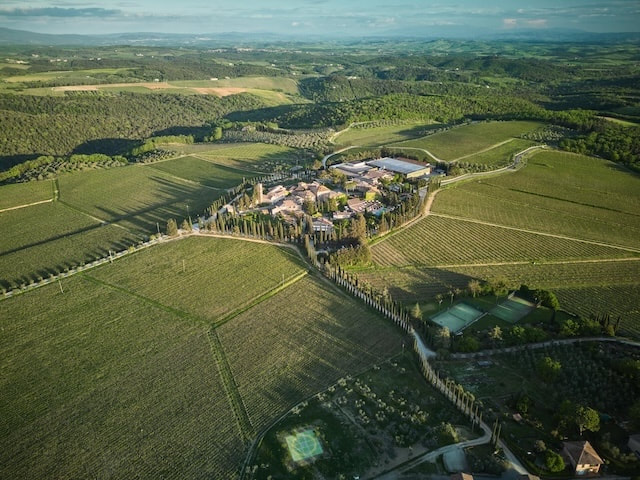

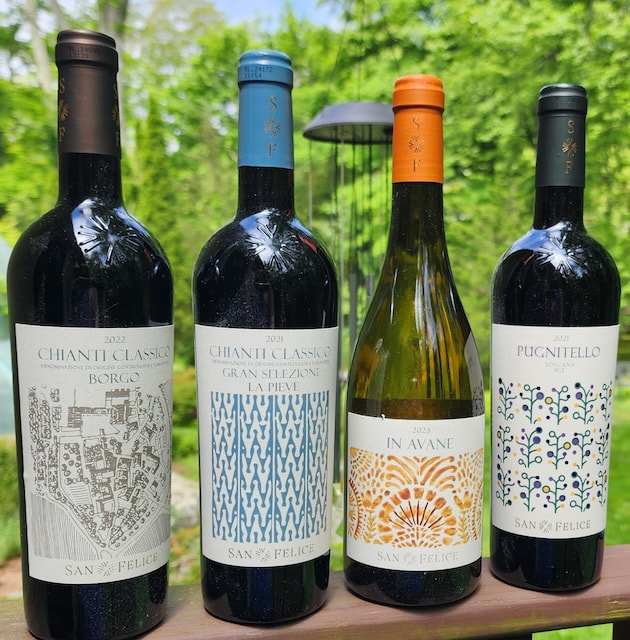
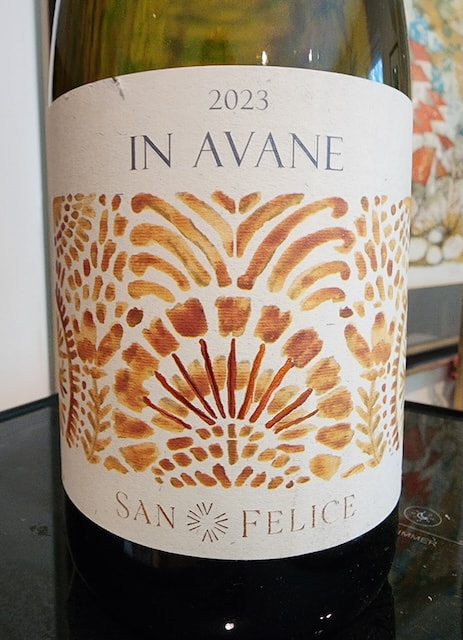
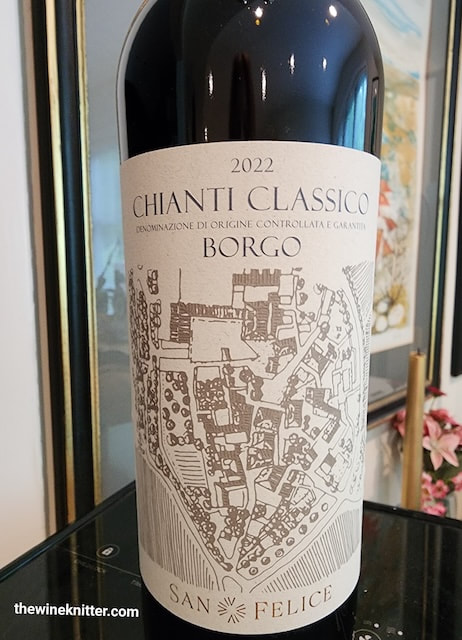
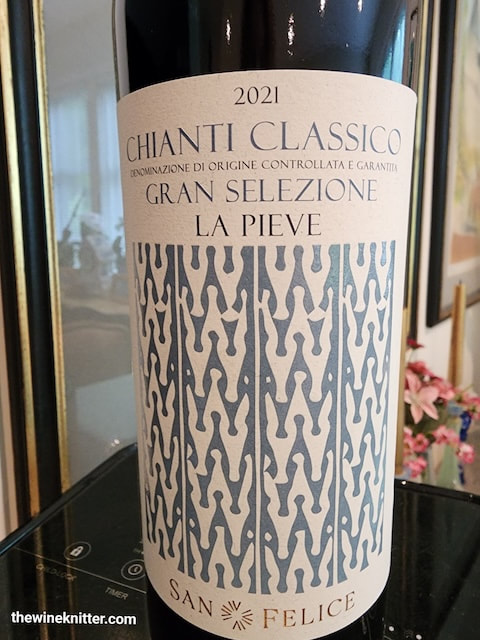
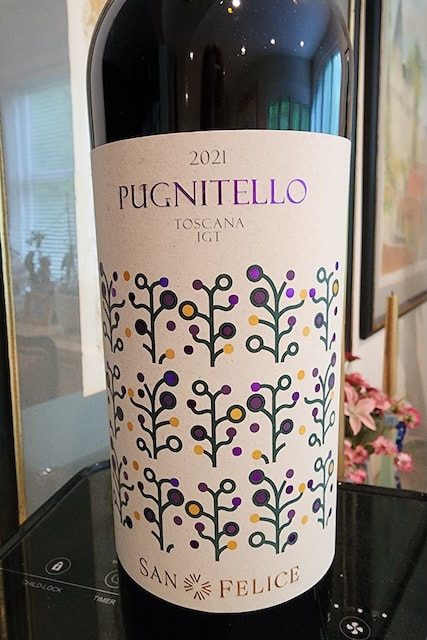
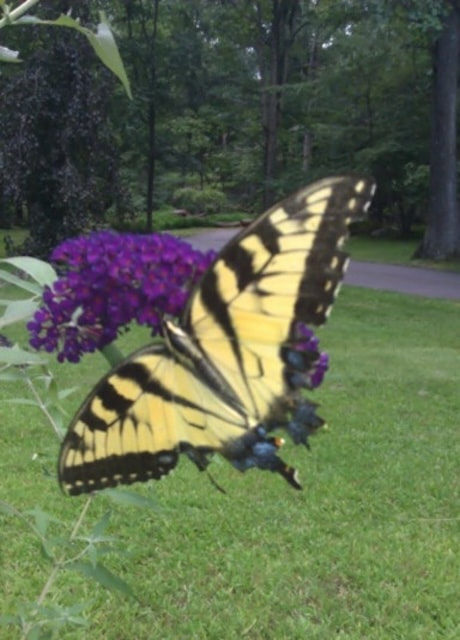
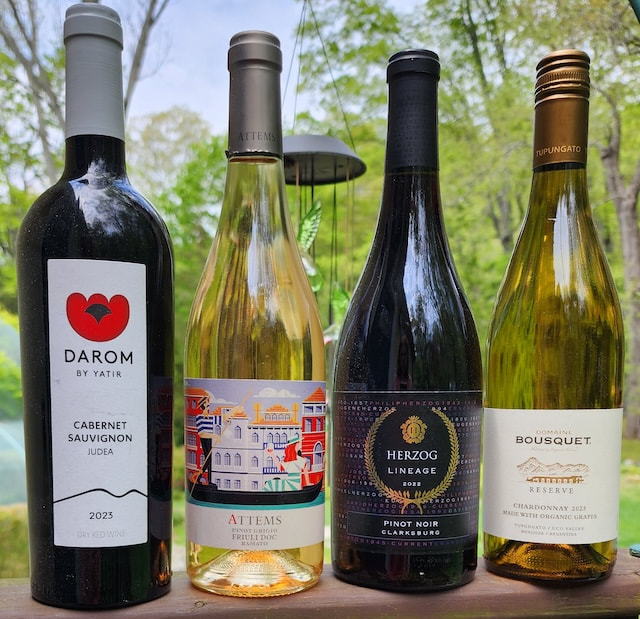
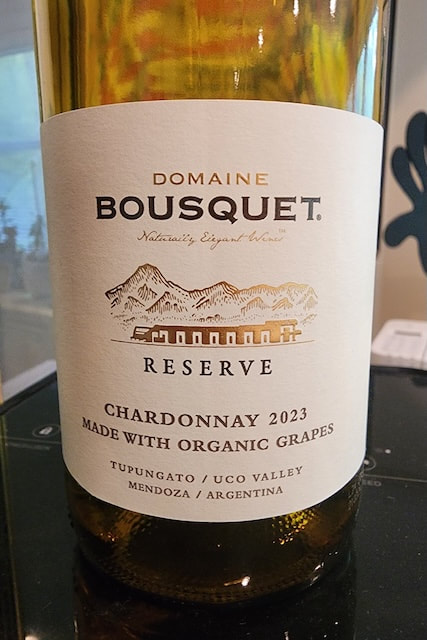
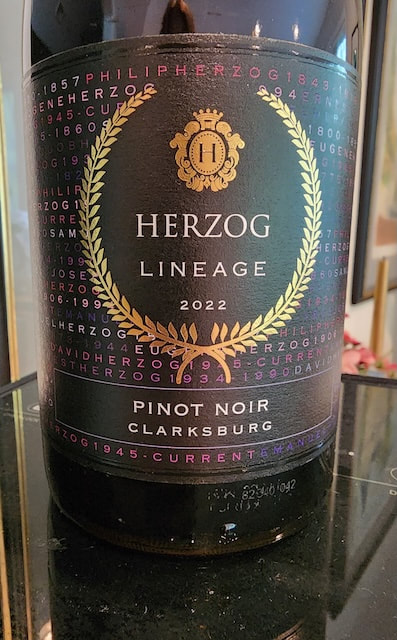
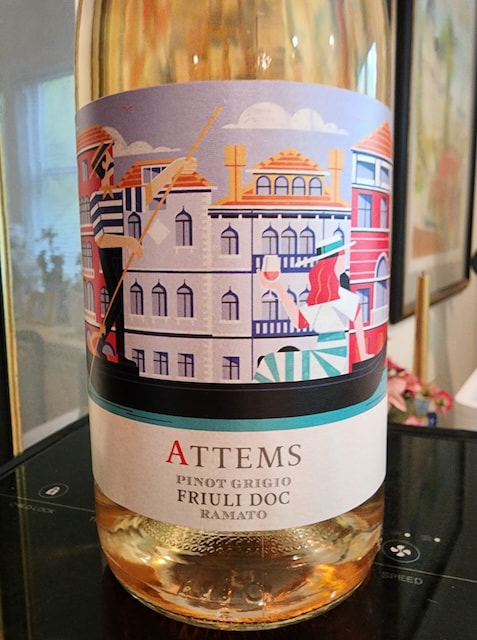
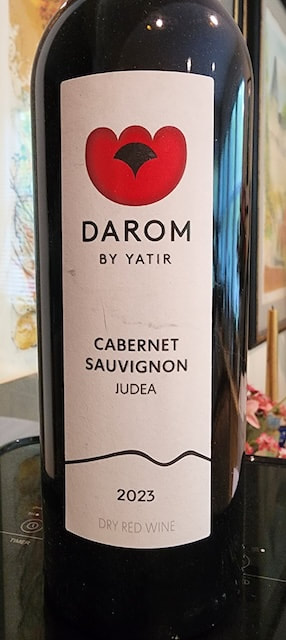








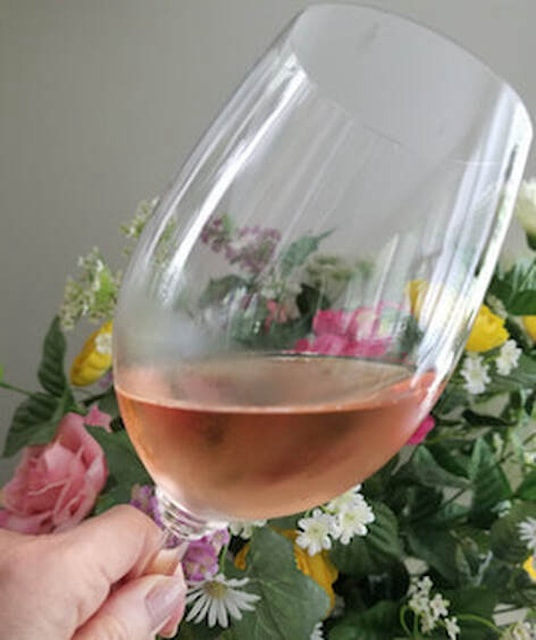
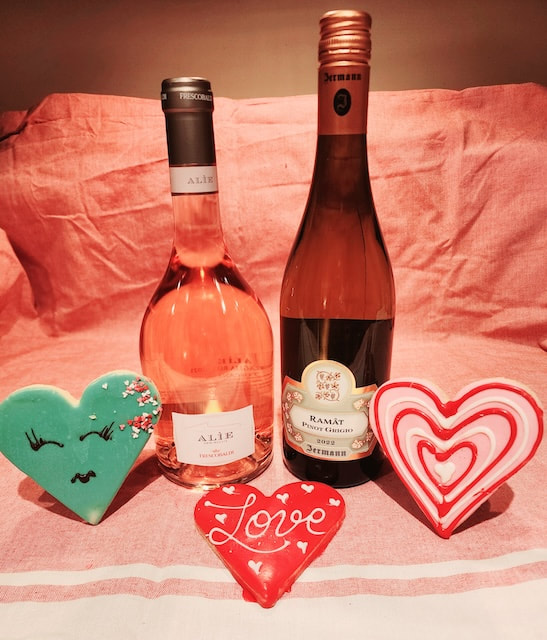
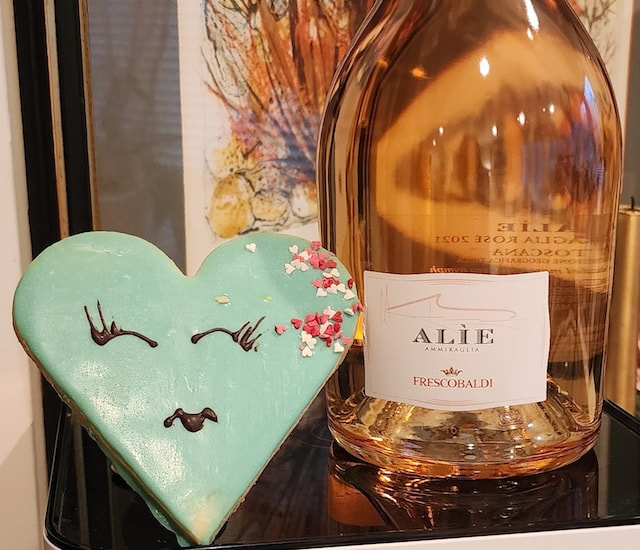
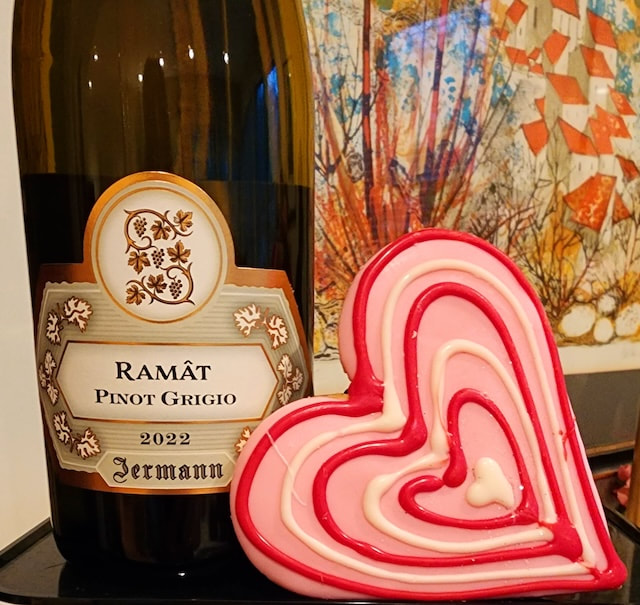
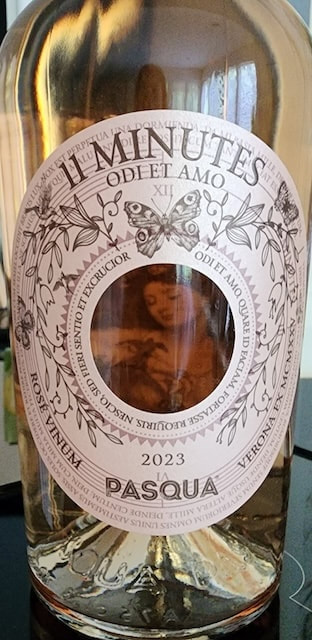

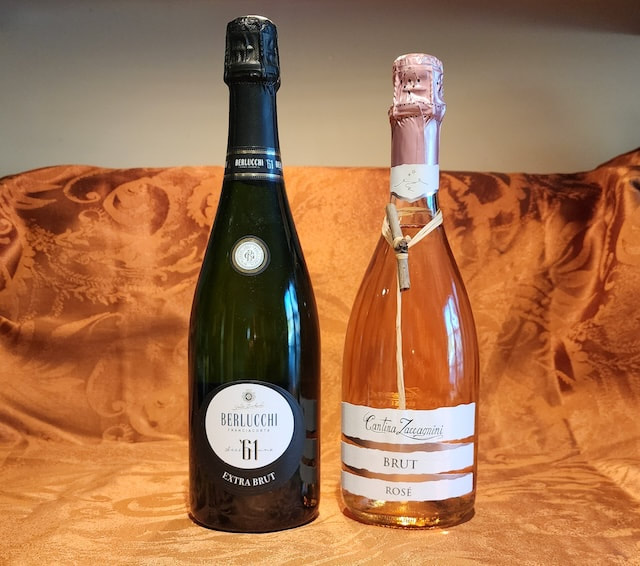
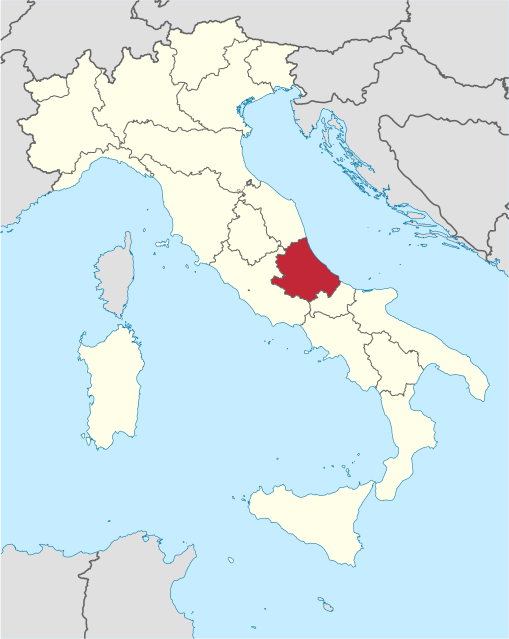
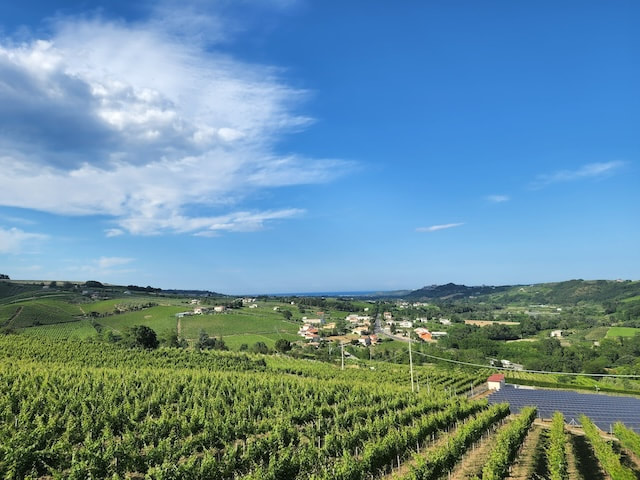
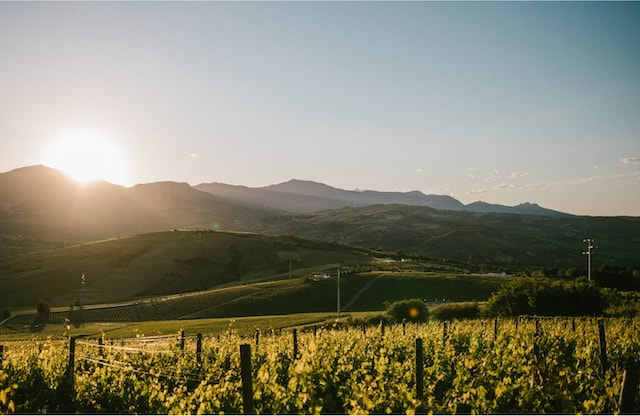
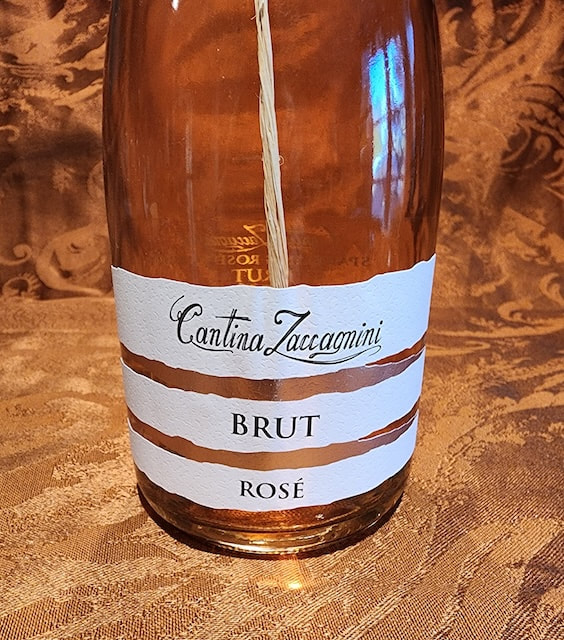
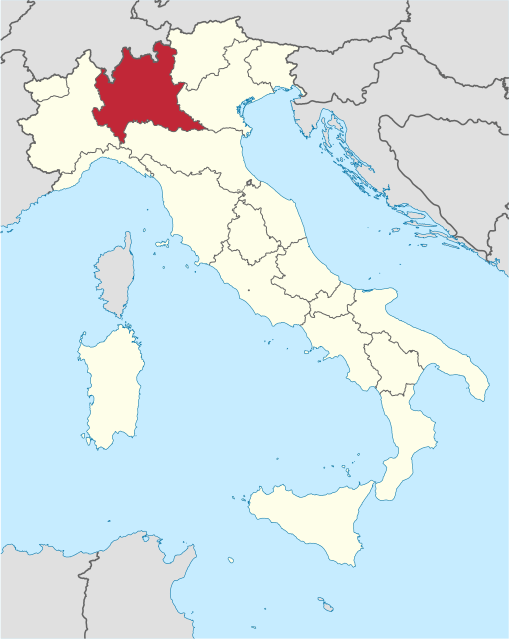
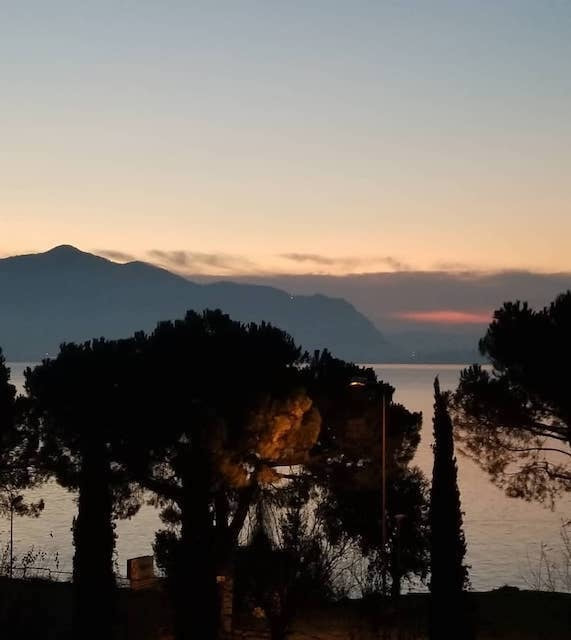
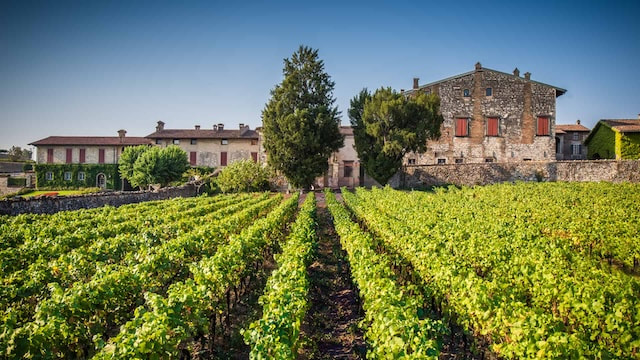
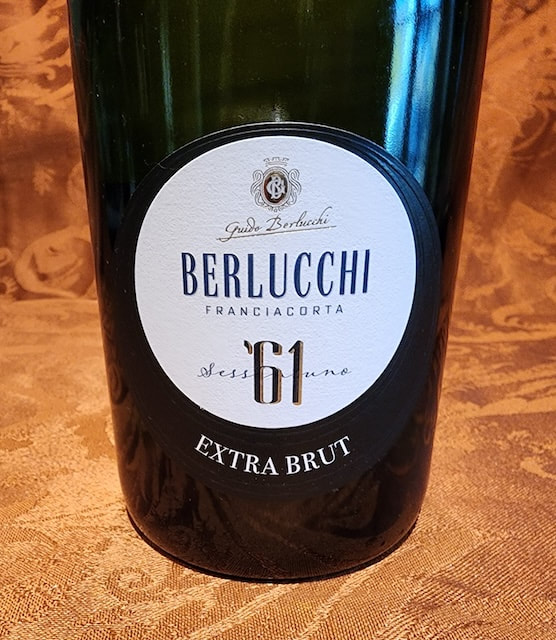
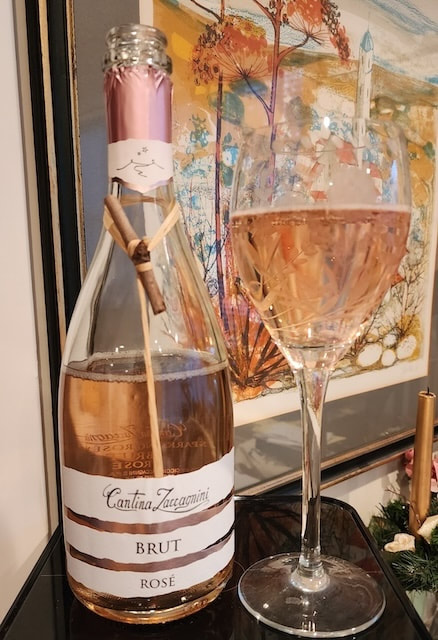
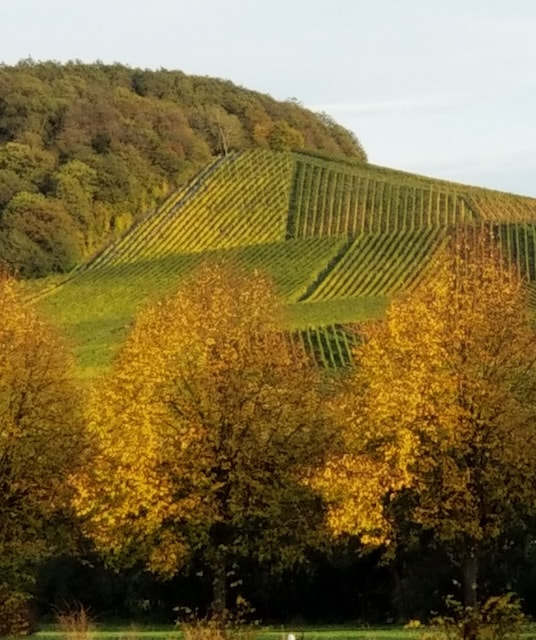
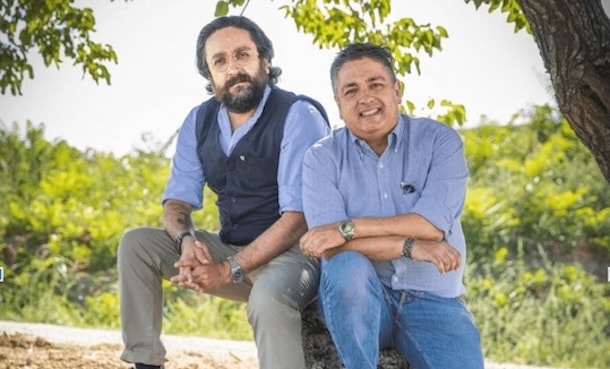
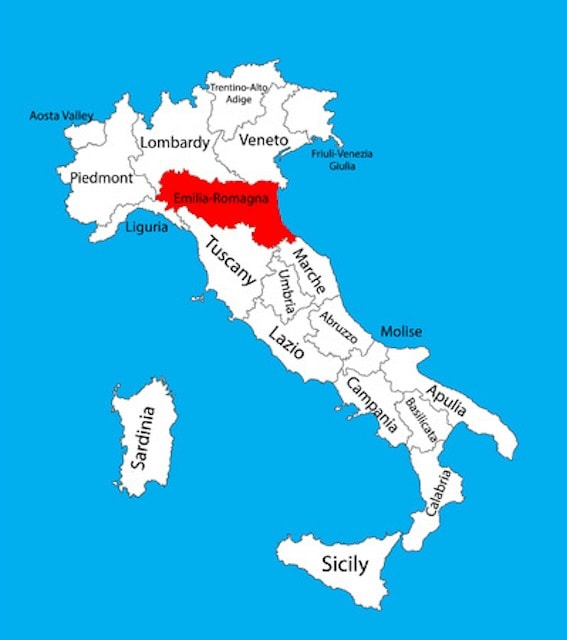
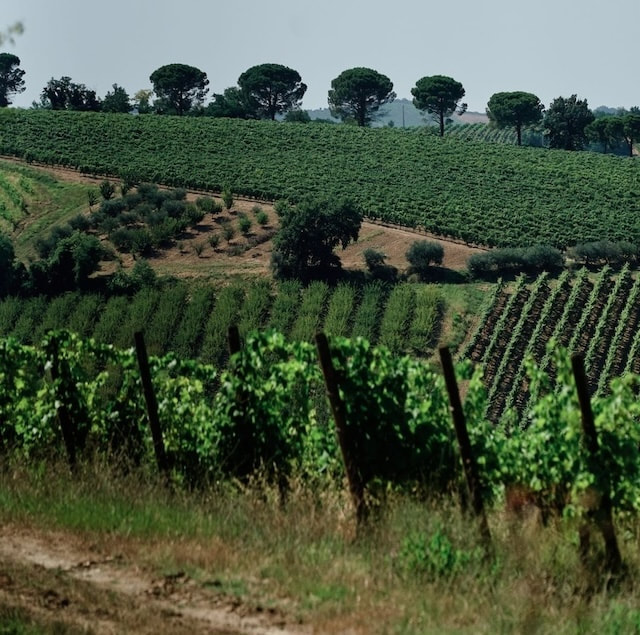
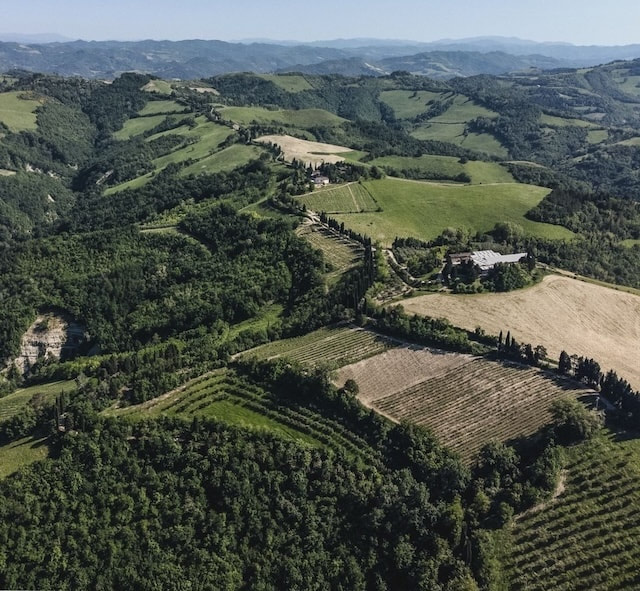
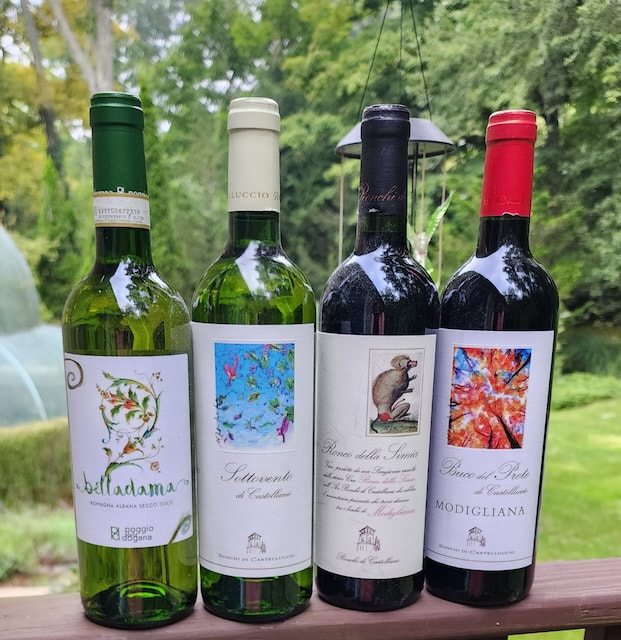
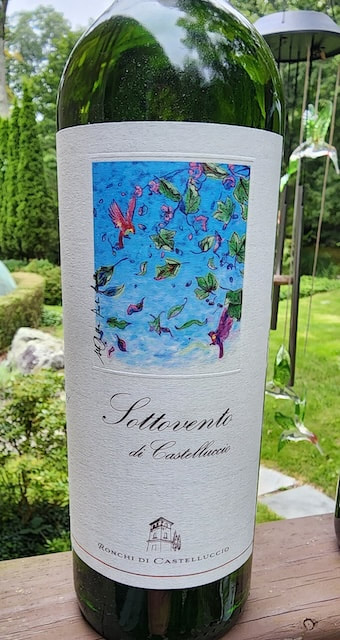
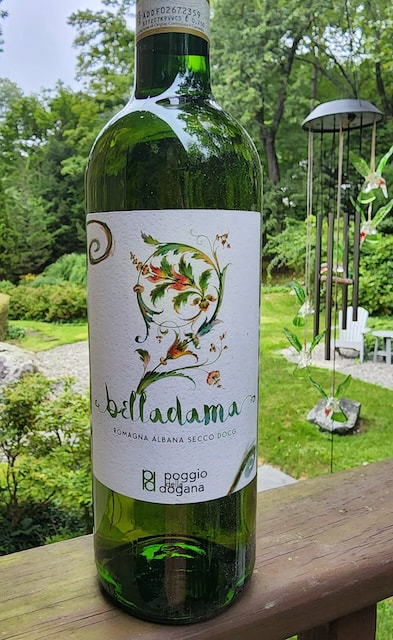
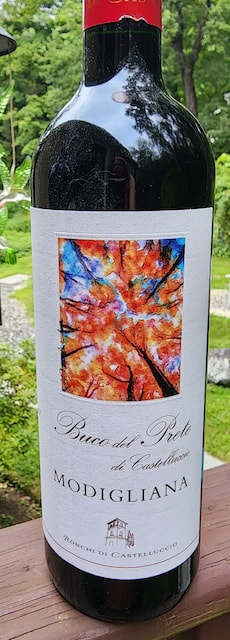
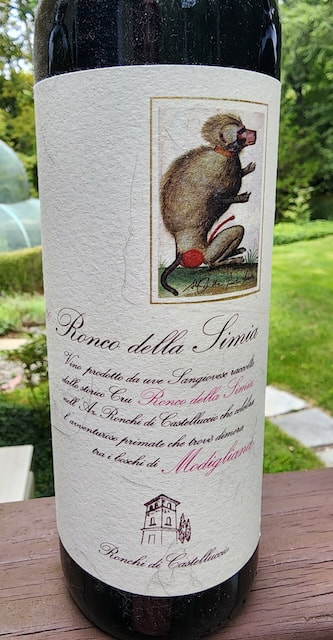
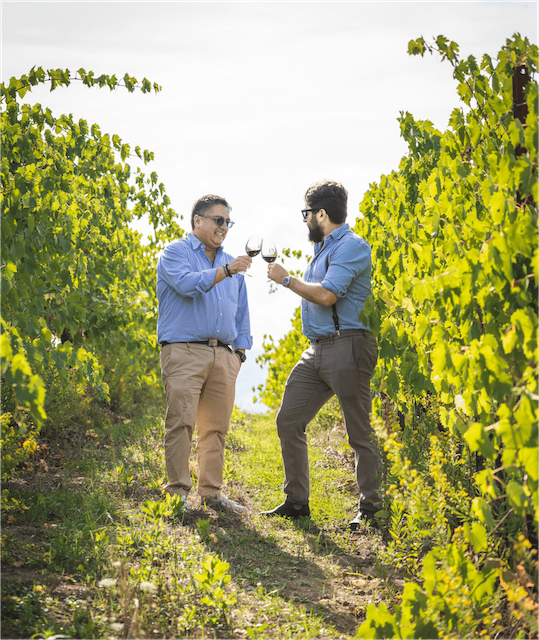
 RSS Feed
RSS Feed